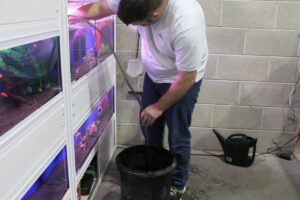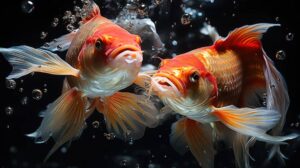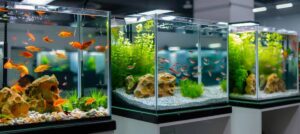The Pets Care Blog
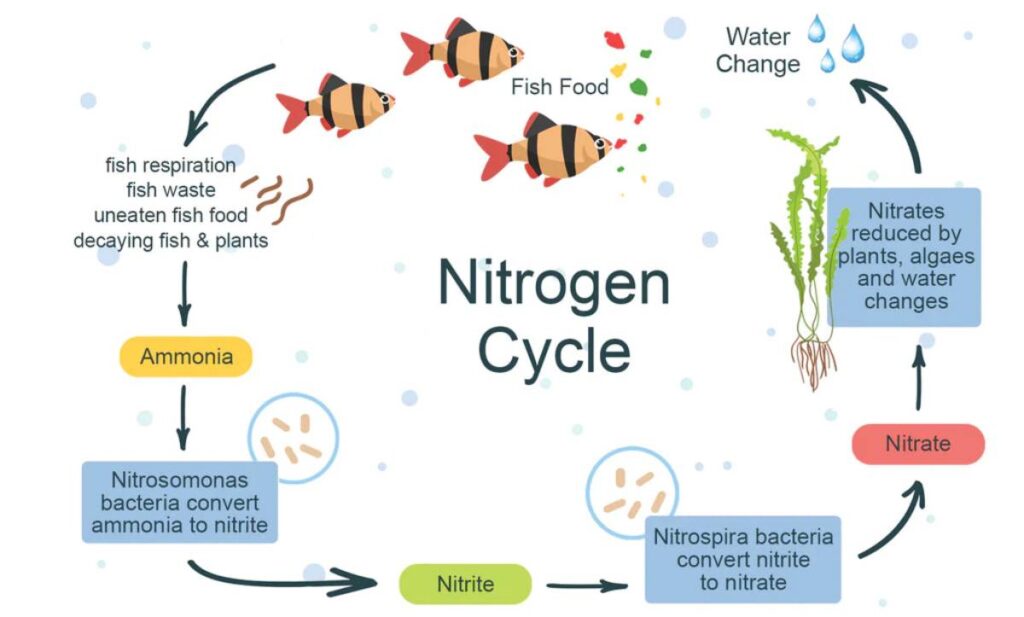
What is the Nitrogen Cycle and Why It Matters
Imagine setting up your beautiful new fish tank — plants arranged just right, sparkling gravel, and your favourite fish gliding through the water. But within days, the fish start acting strangely. Some become sluggish. Others show signs of distress. You’ve been feeding them and keeping the tank clean. So, what went wrong?
The likely culprit? A missing or incomplete nitrogen cycle.
For any aquarium, understanding this cycle isn’t optional — it’s essential. In fact, mastering it is one of the most important steps you can take to keep your fish healthy and your tank running smoothly.
In this article, you’ll discover what the nitrogen cycle is, how to cycle your fish tank properly, and why these water chemistry basics are critical, not just for beginners but for anyone serious about aquarium care.
What is the Nitrogen Cycle in Aquariums?
The nitrogen cycle is the natural process that transforms fish waste and decaying matter into less harmful substances through a series of biological reactions.
Here’s how it works:
- Fish produce waste, and uneaten food breaks down, releasing ammonia into the water.
- Beneficial bacteria (Nitrosomonas) convert this toxic ammonia into nitrites — still harmful, but a step closer to safety.
- Another set of bacteria (Nitrobacter) convert nitrites into nitrates — far less toxic and manageable through water changes or plants.
This bacterial filtration system forms the biological filter of your tank, and without it, fish can quickly die from ammonia or nitrite poisoning.
Why Cycling Your Fish Tank is Essential
When you first set up an aquarium, the beneficial bacteria that manage ammonia and nitrite levels don’t exist yet. You need to establish this bacterial colony before your tank becomes a safe home for fish.
This process is called cycling the fish tank. Think of it as seasoning a new cast iron pan — you’re creating the environment that will do the heavy lifting for you in the long term.
If you skip or rush cycling.
- Ammonia levels can spike quickly.
- Fish become stressed, develop health issues, or die.
- Algae can bloom due to unbalanced water chemistry.
- You’ll constantly battle unstable tank conditions.
Key Stages of the Nitrogen Cycle
Let’s break the nitrogen cycle into simple, trackable phases.
Stage 1: Ammonia Spike
- Begins as soon as waste enters the tank.
- Levels climb rapidly without bacteria to process them.
- Even small amounts (above 0.25 ppm) can be dangerous to fish.
Stage 2: Nitrite Spike
- Once ammonia-eating bacteria grow, ammonia starts to drop.
- Nitrite levels then increase.
- Nitrite is also toxic and causes issues like brown gill disease.
Stage 3: Nitrate Formation
- Second group of bacteria start converting nitrite to nitrate.
- Nitrate is far less harmful (safe under 40 ppm in most freshwater tanks).
- Regular water changes keep nitrate in check.
Tracking these stages with a water test kit allows you to know exactly where your tank is in the cycle — something we cover more in How to Test Aquarium Water Correctly.
How to Cycle a New Aquarium
You have two main options for cycling a fish tank.
1. Fishless Cycling (Recommended)
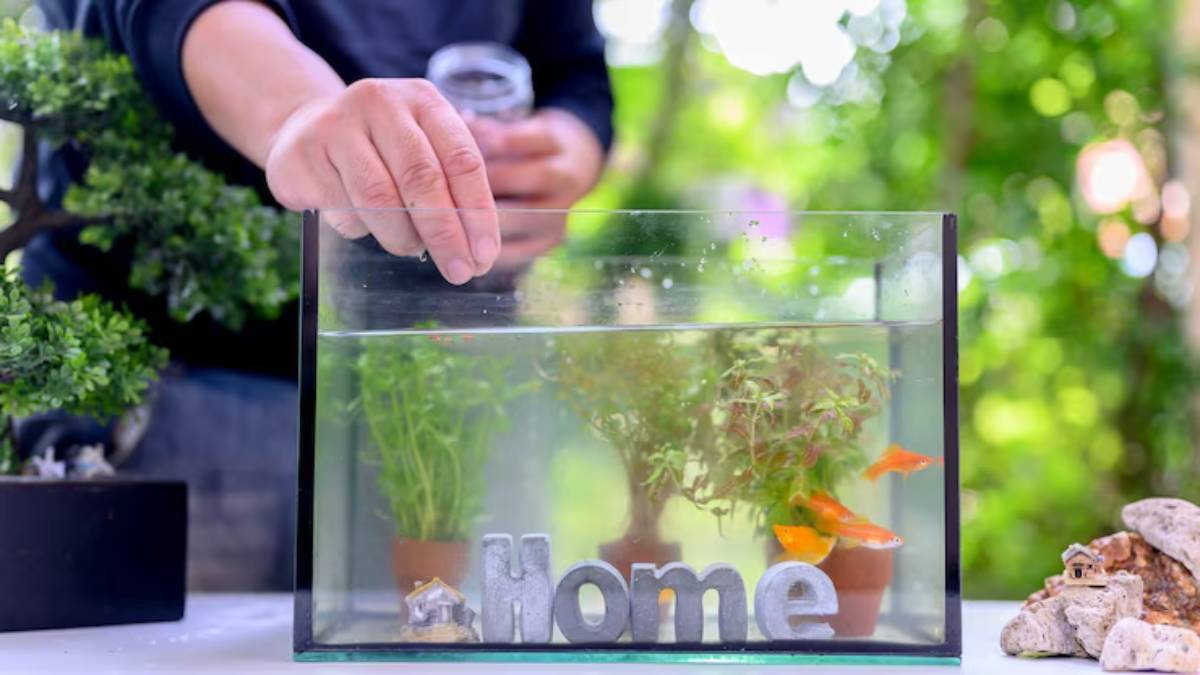
- Add ammonia manually (via pure ammonia or fish food).
- Wait for bacteria to build up before adding fish.
- Test water regularly to track ammonia → nitrite → nitrate changes.
Pros:
- Safe for fish.
- Lets bacteria establish without harming live animals.
Cons:
- Takes 4–6 weeks on average.
- Requires patience and regular monitoring.
2. Fish-in Cycling
- Introduce hardy fish from the start.
- Rely on their waste to fuel the cycle.
- Must perform frequent water changes to prevent toxicity.
Pros:
- More interactive from the start.
- Shortens the gap between setup and enjoyment.
Cons:
- Puts fish at risk of stress and illness.
- Requires extra care and testing.
Most aquarists now lean toward fishless cycling for ethical and health reasons.
Tools and Supplies That Help the Cycle
Starting your nitrogen cycle is easier when you’re equipped with the right tools.
- Liquid Test Kit: More accurate than strips; tracks ammonia, nitrite, and nitrate.
- Dechlorinator: Tap water often contains chlorine, which kills beneficial bacteria.
- Ammonia Source: Either household ammonia (without additives) or fish food.
- Biological Media: Porous filter material, like ceramic rings, to grow bacteria.
- Heater (for tropical tanks): Warm water speeds up bacterial growth.
Want to dive deeper into gear? You might enjoy reading Key Equipment Differences Between Freshwater and Saltwater.
Signs Your Tank Has Completed Cycling
After weeks of waiting and testing, how do you know when your tank is ready?
Look for these signs:
- Ammonia: 0 ppm
- Nitrite: 0 ppm
- Nitrate: 10–30 ppm
If you add a small dose of ammonia and it processes completely within 24 hours, congratulations, your tank is cycled!
Maintaining the Nitrogen Cycle Long-Term
The cycle isn’t a one-time task. It’s an ongoing process, and your job is to support the bacterial balance over time.
Here’s how:
- Avoid over-cleaning your filter. Rinsing filter media in tap water kills bacteria. Instead, rinse it in tank water during water changes.
- Don’t overstock your tank. Too many fish = too much waste = ammonia spikes.
- Feed sparingly. Uneaten food decays into ammonia fast.
- Do weekly water changes (typically 25%) to keep nitrate levels low.
- Use a gravel vacuum to remove detritus and leftover food.
Keeping this routine consistent helps you avoid mini-cycles, which occur when bacteria die off, and the tank partially restarts the nitrogen process.
Special Cases: Plants, Filters, and Bacteria Boosters
There are a few helpful tools and natural boosters that can support or speed up your cycle.
Live Plants
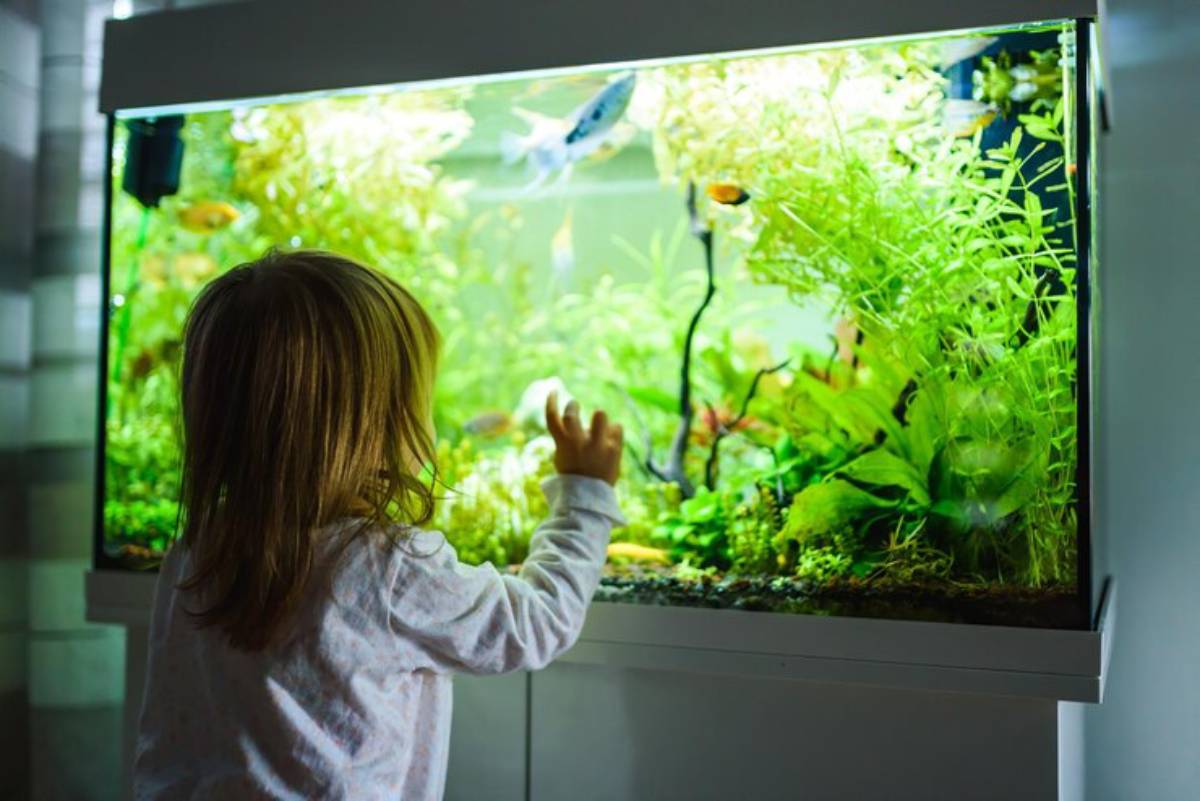
- Absorb nitrates and ammonia as nutrients.
- Compete with algae for excess nutrients.
- Make great allies in cycling and stability.
Established Filter Media
- If you have a friend with a healthy tank, ask for a piece of their filter sponge or bio rings.
- This jump-starts your bacterial colony.
Bacterial Additives
- Products like API Quick Start or Seachem Stability introduce live bacteria.
- Results vary, but they can reduce cycling time when used properly.
Common Mistakes Beginners Make
Cycling a tank isn’t hard, but a few slip-ups can set you back weeks.
Avoid these pitfalls.
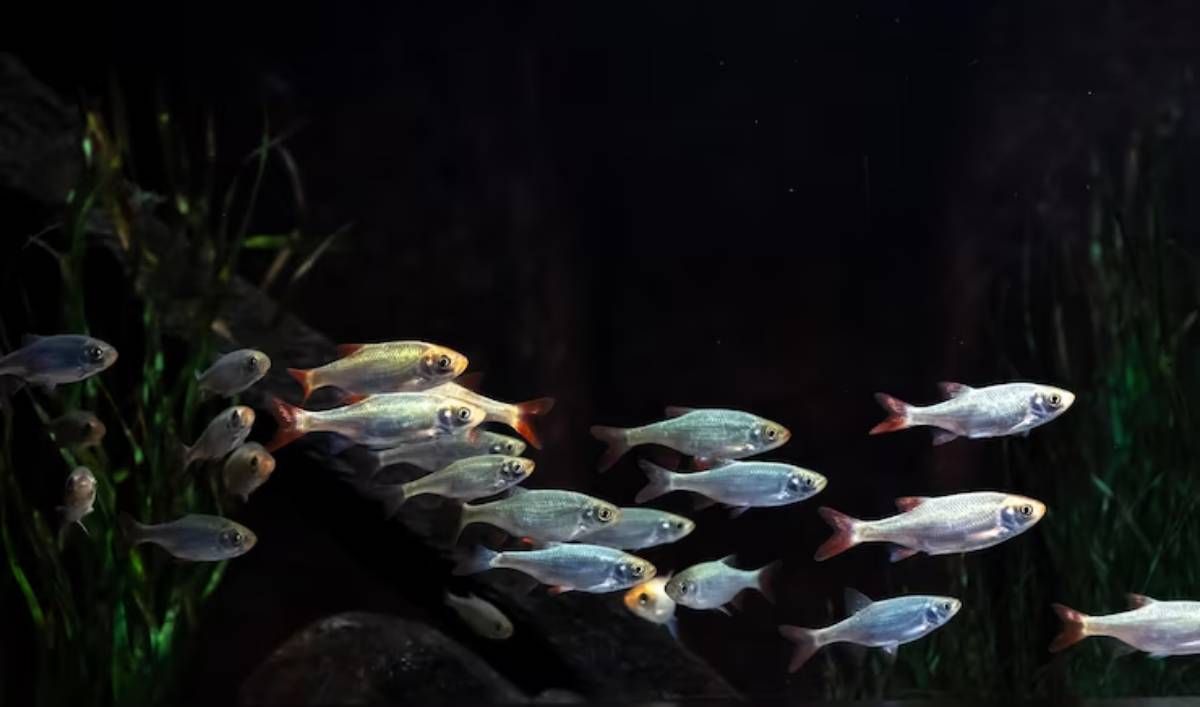
- Adding too many fish too soon
- Cleaning filters or decor with chlorinated tap water
- Not testing the water regularly
- Skipping water conditioners
- Confusing clear water with clean water (Ammonia and nitrite can be invisible!)
Being proactive prevents heartache and fish loss.
Conclusion: Master the Nitrogen Cycle, Master Your Aquarium
The nitrogen cycle might sound technical at first, but at its heart, it’s about creating a safe, stable home for your fish. When your tank is properly cycled, you’re not just checking a box — you’re building the foundation of a thriving aquatic environment.
By understanding how waste turns into toxins and how beneficial bacteria transform those toxins into something manageable, you’ll have the confidence to care for your fish the right way.
Ready to start cycling your fish tank?
Pick your method, test your water, and let nature work its magic. Let us know how your cycle goes in the comments — or ask your cycling questions and we’ll help you troubleshoot.




